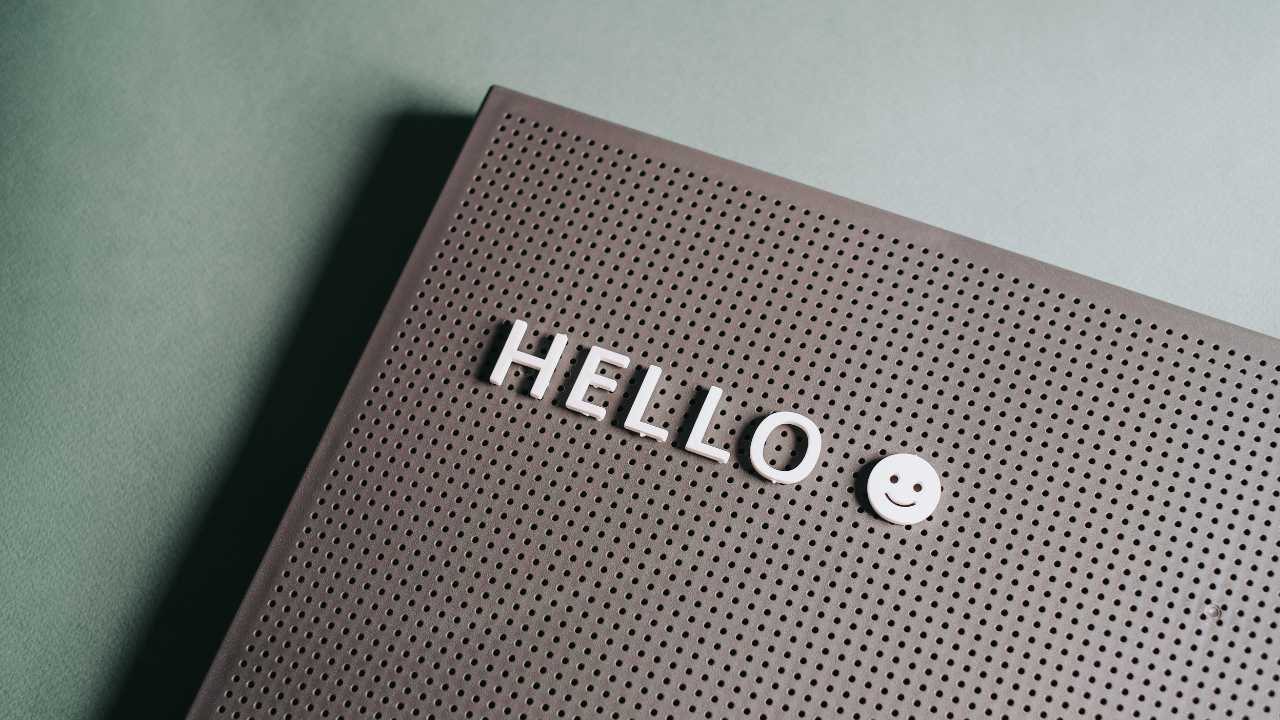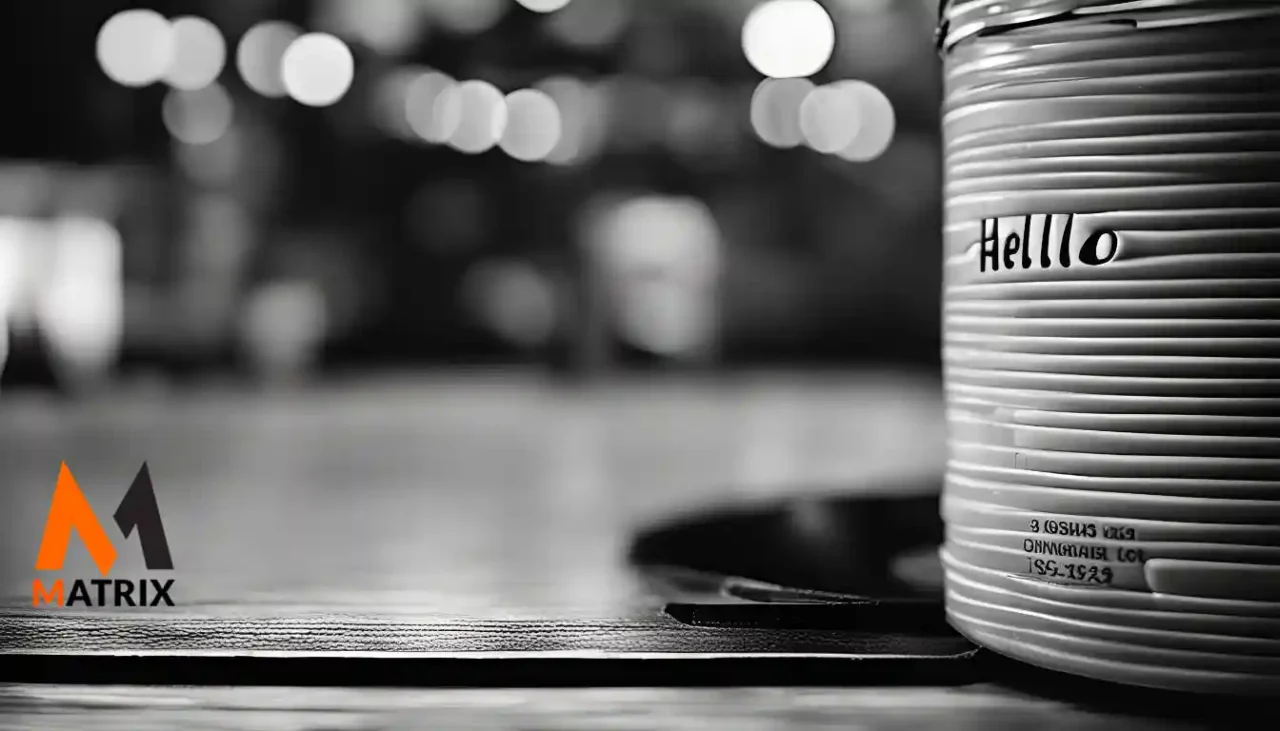From Ancient Salutations to Modern Communication: Unveiling the Journey of ‘Hello’
Who invented Hello World?
Who said hello first on the telephone?
What is the origin of hello on the telephone, and by whom?
1. Introduction
In the fast-paced business world, every interaction begins with a greeting, and “Hello” has become the universal key to starting a conversation.
Whether you’re making a first impression in person, over the phone, or via email, “Hello” sets the tone. But have you ever stopped to think about where this simple word came from?
How did “Hello” become the most recognized and widely used greeting in business and beyond? This article delves into the fascinating history and evolution of “Hello,” exploring its origins and role in modern communication.
2. The Origins of ‘Hello’

Early Forms of Greetings
Before “Hello” became the go-to greeting, humans used various forms of address to initiate communication. In ancient cultures, greetings were often elaborate, reflecting social status and relationships.
The Romans, for example, might say “Ave” (meaning “hail”) to show respect, while in medieval England, “Good day” or “God be with you” were common phrases. These greetings were more formal and tied to specific cultural norms.
The Emergence of ‘Hello’
The word “Hello” first gained traction in the 19th century. Some linguists believe it may have evolved from the Old High German word “hala,” which was used to attract attention.
In English, early forms like “hello” and “hullo” were used more as exclamations, akin to shouting “Hey!” to get someone’s attention.
It wasn’t until later that “Hello” became a standard greeting. The first recorded use of “Hello” as a greeting is attributed to the American writer and editor Thomas Edison, who popularized the word during the advent of the telephone. AI Agentic Systems for Marketing Healthcare Organizations
3. The Role of Technology in Popularizing ‘Hello’
The Invention of the Telephone
The telephone, invented by Alexander Graham Bell in 1876, was pivotal in making “Hello” a household word. Interestingly, Bell preferred the greeting “Ahoy” for the first phone call.
However, Thomas Edison championed “Hello” as the standard greeting for answering the telephone. His influence was so strong that by the early 20th century, “Hello” had become the norm in telecommunication, cementing its place in everyday language.
How Telecommunication Transformed Greetings
The widespread adoption of the telephone changed the way people greeted each other. “Hello” became associated with professionalism and efficiency—highly valued traits in business communication.
The telephone also necessitated a universal greeting that could be understood across different regions and dialects. This helped solidify “Hello” as the greeting of choice in English-speaking countries and worldwide.
4. Cultural Impact and Evolution of ‘Hello’

Global Adoption of ‘Hello’
As telecommunication spread globally, so did “Hello.” While other cultures had greetings, “Hello” was easy to adopt and versatile enough to fit a wide range of social contexts.
Today, “Hello” is understood in many languages and often serves as a neutral, non-offensive greeting that transcends cultural boundaries.
Variations and Modern Usage
While “Hello” remains a staple, it has evolved into various informal versions. “Hi,” “Hey,” and even regional variations like “Howdy” in the southern United States have become common.
In digital communication, “Hello” has also been adapted—emails might start with a “Hello” or a more casual “Hi,” depending on the level of formality required. Despite these variations, the essence of the greeting remains the same: a way to connect and acknowledge the other person.
Pop Culture and ‘Hello’
“Hello” has also permeated popular culture, further solidifying its place in everyday language. From the iconic line “Hello, my name is Inigo Montoya” in The Princess Bride to Adele’s chart-topping song “Hello,” the word has become synonymous with making an impactful entrance or re-establishing contact.
These cultural references reinforce the greeting’s significance and keep it relevant across generations.
5. The Linguistic Evolution of ‘Hello’

Phonetic Changes Over Time
The pronunciation of “Hello” has remained relatively stable, but regional accents and dialects have given it unique flavors. In some areas, the “o” in “Hello” might be drawn out, while in others, it’s clipped.
These subtle differences reflect the dynamic nature of language and how “Hello” has adapted to fit various speech patterns.
Sociolinguistic Perspectives
“Hello” also carries sociolinguistic weight. In formal settings, it signals professionalism, while in casual settings, it fosters friendliness.
Using “Hello” can also reveal social hierarchies—think about how differently you might say “Hello” to a colleague versus a superior. The word has become a tool for navigating social dynamics, making it more than just a simple greeting.
6. Comparing ‘Hello’ with Other Greetings
Historical Comparisons
Comparing “Hello” with older greetings like “Good day” or “Salutations” highlights its efficiency and adaptability.
While these older greetings were more elaborate, “Hello” offers a quick and versatile way to start a conversation, making it ideal for the modern, fast-paced world.
The decline of these older greetings in favor of “Hello” reflects broader societal shifts towards simplicity and speed in communication.
Modern Comparisons
In today’s digital world, greetings have further evolved. Texting and instant messaging have given rise to even shorter greetings, such as “Hey” or “Sup.”
Despite this, “Hello” remains a mainstay in more formal or professional settings, demonstrating its continued relevance.
It bridges the gap between old-fashioned politeness and modern efficiency.
How are autonomous sales platforms greeting customers?
Autonomous sales platforms (often called “agentic AI” or “digital employees”) have moved beyond the static “How may I help you?” scripts of traditional chatbots. Instead, they use generative AI to dynamically generate greetings based on user behavior, history, and emotional cues.
Here is an analysis of how these systems currently greet customers, categorized by medium and strategy.
1. The “Hyper-Personalized” Text Greeting

Unlike old chatbots that used a fixed decision tree, modern autonomous agents analyze your session data before saying hello. They construct a greeting that attempts to skip the “discovery” phase and go straight to value.
- The “Context-Aware” Opener: Instead of a generic welcome, the agent references exactly what the user is looking at to simulate a watchful shop assistant.
- Example: “I noticed you’ve been comparing the Pro and Enterprise plans for a few minutes. Would you like a quick summary of the three main differences?”
- The “Return Visitor” Recognition: If the user is logged in or recognized via cookies, the agent pulls CRM data to bridge the gap between sessions.
- Example: “Welcome back, Sarah. I see you didn’t complete the checkout for the hiking boots last Tuesday. We actually just dropped the price by 10%—want to see the new total?”
- The “Intent Prediction” Nudge: The AI analyzes mouse movement (e.g., rage clicking, rapid scrolling, or hovering over exit buttons) to intervene at the moment of hesitation.
- Example: “It looks like you might be looking for the return policy. I can pull that up for you right here so you don’t have to leave this page.”
2. The “Empathic” Visual Greeting (AI Avatars)
Platforms using “Digital Humans” (like those from Soul Machines or Uneeq) use visual cues to build rapport before a word is even spoken. These avatars rely on non-verbal communication to greet customers.
- The “Micro-Expression” Welcome: Before speaking, the avatar will simulate “active listening” cues.
- Action: The avatar makes eye contact (simulated via camera tracking), offers a small, genuine Duchenne smile (with eyes crinkling), and nods slightly in acknowledgment.
- The “Mirroring” Technique: Advanced avatars use computer vision (with permission) to detect the user’s mood via webcam and adjust their greeting tone.
- Scenario A (User looks happy): “Hi there! You look like you’re having a good day. Ready to see the new collection?” (Upbeat, fast-paced).
- Scenario B (User looks confused/frustrated): “Hello. I can see this menu might be a bit complex. I’m here to help simplify things.” (Calm, slower pace, lower pitch).
3. The “Disarming” Voice Greeting
Voice AI agents (often used in cold calling or inbound support) are designed to overcome the immediate “I am talking to a robot” resistance. They use disfluencies and transparency to sound natural.
- The “Humanized” Pause: Generative voice agents now intentionally insert “fillers” into their greeting to sound less rehearsed.
- Example: “Hi, this is Alex from [Company]… uh… I was looking at your recent inquiry about our solar panels.”
- The “Transparent” Pivot: To build trust, many autonomous agents immediately admit they are AI but frame it as a benefit (speed/efficiency).
- Example: “Hi! I’m an automated assistant designed to get you a quote in under 30 seconds. Is that okay, or would you prefer to wait for a human?”
- Why it works: It gives the customer control immediately, which usually results in them engaging with the AI anyway because it is faster.
4. Strategies Behind the Greeting
The psychology behind these greetings differs significantly from traditional sales:
| Strategy | Traditional Chatbot | Autonomous Sales Agent |
| Goal | Route the customer to a FAQ or human. | Keep the customer engaged and close the sale. |
| Timing | Immediate pop-up upon entry (often annoying). | Delays greeting until specific “intent signals” are detected (e.g., 30 seconds on a pricing page). |
| Tone | Professional, stiff, repetitive. | Adaptive (Casual/Gen Z for fashion; Formal/Precise for B2B software). |
| Memory | None (Every session is new). | Infinite (Remembers that you prefer “red” items or asked about “shipping” last month). |
Summary of Greeting Styles
- The “Concierge” (High-End Retail): “Good afternoon. I’ve curated a few items based on the style you browsed last week. Shall I show you?”
- The “Utility” (SaaS/Tech): “I can see you are hitting an error on the setup page. Want me to run a diagnostic for you?”
- The “Promotion” (E-commerce): “Psst… that item in your cart is low stock. We have 3 left. Want to secure it?”
7. Conclusion
“Hello” has a rich history that reflects the evolution of human communication. From its early beginnings as an exclamation to its role as a standardized greeting in the age of the telephone, “Hello” has become a symbol of connection and professionalism.
As we move into the digital age, “Hello” adapts, proving that even the simplest words can have a profound impact.
Understanding the history and significance of “Hello” can give business professionals a deeper appreciation for the power of language in building relationships and conducting successful communications.
Engage with us! How do you use “Hello” in your daily business interactions?
Stop getting your AI budget cut: Move beyond “efficiency” to provable P&L impact.
Core Concept: Visually contrast the failed “efficiency-only” pitch (which collapses into a Strategic Value Black Hole) with a 4D Value Framework that ties AI to revenue, pipeline, enterprise value, and risk reduction.
The Strategic Value Black Hole
Cost-only logic collapses your business case. Efficiency ≠ investment thesis.
A 5% boost in “Lead Scoring Accuracy” = $12M in Qualified Pipeline.
Tie model accuracy to increased Sales-Accepted Leads and win-rate lift.
A 10% lift in “Cross-Sell Conversion” from AI = $45M in New Revenue.
Translate conversion lift into additional orders, margins, and P&L impact.
A 20% increase in “Customer Lifetime Value (CLV)” from AI-personalization = $100M in Enterprise Value.
Convert CLV gains into discounted cash flows the CFO recognizes.
AI-driven compliance in ad-targeting = $8M in Fines Avoided.
Model compliance avoidance as preserved operating income.

